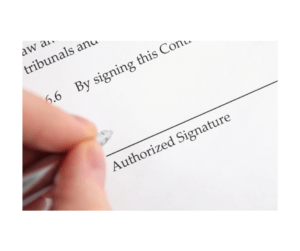The Finney law Firm is prepared to fully and vigorously litigate your claim, through appeals if necessary. Indeed, our attorneys have handled appeals of a case all the way through the U.S. Supreme Court. So, please do not read this article as a lack of resolve to pursue a case through the end. Rather it reports the practical reality of the economics of the difficult process that litigation can be.
As is explained in these articles, here, here and here, litigation is typically lengthy, expensive, and unpredictable.
Frequently, but not always, the process is withering for the typical business and individual litigant. With some exceptions noted in the next paragraph, because of the time, cost and uncertainty of litigation, an early settlement is preferential to protracted litigation.
 As a result, one technique Finney Law Firm attorneys frequently employ and may recommend to you an attempt at a very early settlement of your case, whether as Plaintiff or Defendant.
As a result, one technique Finney Law Firm attorneys frequently employ and may recommend to you an attempt at a very early settlement of your case, whether as Plaintiff or Defendant.
As a Plaintiff, if you can resolve a case before incurring legal fees, expert witness fees, court reporter charges, and other expenses attendant to litigation, if you can tie up a settlement and eliminate the risk — however small — of a loss in Court, and if you can avoid the life distraction of two-to-three years to resolve your Complaint, it may be in your interest to comprise your claim and settle it.
As Defendant, if you can similarly avoid the costs of litigation, reduce the risk of a large judgment, and avoid the collateral damage to your business that litigation can bring, a settlement can be in your interest.
In our experience, rarely do Judges see things as black and white as do our clients on the original intake meeting.
For cases under, say, $50,000 in value, the two parties frequently can reasonably be expected to spend more than half that in expenses to bring a case all the way through trial. Even resolving a claim on Summary Judgment, after significant dollars have been expended, can be an expensive approach.
Thus, one approach frequently recommended to clients of the Finney Law Firm is to attempt to settle a claim in the very early stages (i.e., before filing a law suit or before filing a formal answer).
Now, the response to these approaches, is all too often, regrettably, that the other side will not entertain an early settlement. However, sometimes we are able to settle a claim before the monies of both parties are eaten up on legal fees. But even when settlement is not accepted in the early stages, it can set the stage for favorable terms later in the proceedings, as the opposing counsel knows the other party and his attorney was and is always willing to attempt to resolve the claim.
And even more unfortunate, the opposing party and their counsel frequently will interpret, incorrectly, that taking a stab at preemptive settlement of a claim shows lack of resolve to see a matter through to conclusion. Such is the posturing that accompanies much of the “litigation game,” but we prefer to start with the client analyzing the costs and risks of a full litigation of a claim before (not always instead of) embarking on the most expensive path available — litigation.
Read below four related topics:
Navigating turbulent waters: The litigation end game
Navigating turbulent waters: The economics of litigating low-dollar claims
Navigating turbulent waters: It’s not all black and white for judges
Navigating turbulent waters: Turning the tables on the opposing party
 Many of those engaging in commerce of all sorts are commonly using electronic signatures today, including on real estate contracts and other documents. Documents that require an “acknowledgement” or “notary seal” still must be signed in-person, but otherwise, the act makes the e-signature just as effective.
Many of those engaging in commerce of all sorts are commonly using electronic signatures today, including on real estate contracts and other documents. Documents that require an “acknowledgement” or “notary seal” still must be signed in-person, but otherwise, the act makes the e-signature just as effective.



